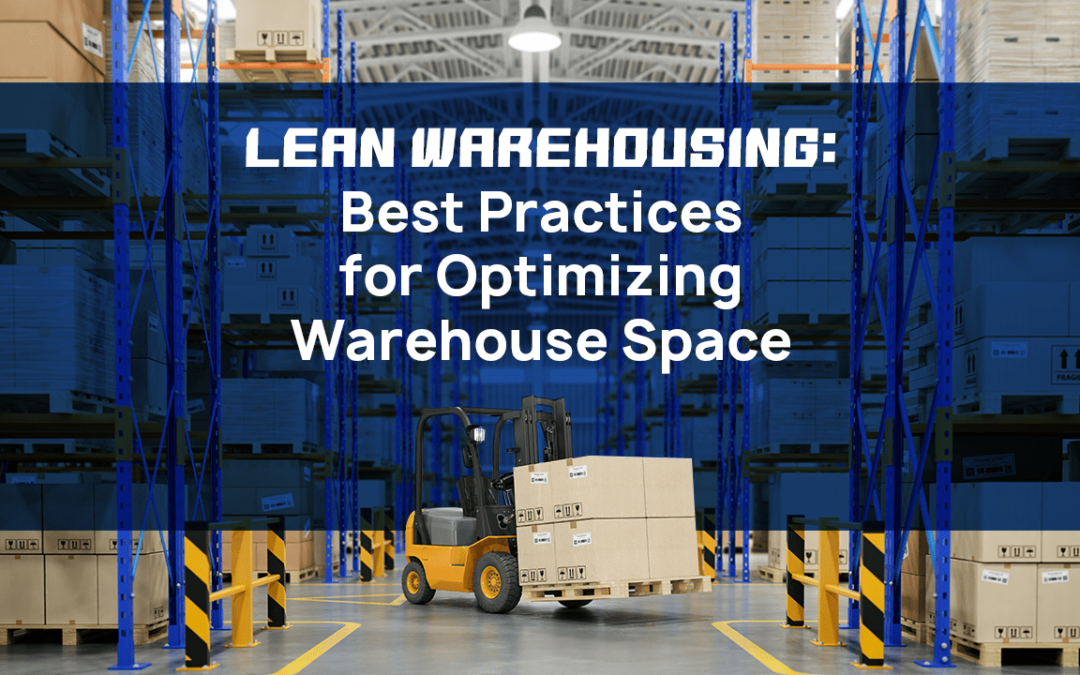Lean Warehousing: Best Practices for Optimizing Warehouse Space
If you’re looking to outsource storage, you need a warehouse provider who is focused on delivering value. But how does a warehouse demonstrate to you that they’re providing value efficiently, with minimal waste in terms of time, costs, and resources?
Looking for a warehouse provider who understands lean principles is a good start. This article will give a brief overview of what lean warehousing is and why you should consider working with someone who understands and applies lean principles in their warehouse operations. Let’s get started.
What Is Lean Warehousing?
Lean warehousing is all about creating value for customers while minimizing waste. It’s about looking at the entire storage process from the customer’s perspective, and consistently improving that process to provide better value with fewer resources. A major component of a good lean warehousing strategy is improved warehouse capacity. Optimizing warehouse space allows us to store products more efficiently.
This not only results in better warehousing services, but it also minimizes the potential for missteps and lowers costs for customers.
Where Did Lean Come From?
After studying companies that revolutionized the manufacturing process, like Ford and Toyota, James P. Womack and Daniel T. Jones wrote a book called Lean Thinking, where they outlined 5 lean principles:
- Define what value means from the customer’s perspective.
- Identify all the steps involved in each process and remove steps that don’t contribute to creating value.
- Organize the process so that each value-creating step happens “in tight sequence.”
- Allow customers to “pull” value as needed, so they get exactly what they need when they need it. (This step helps eliminate excess inventory and wasted space.)
- Keep repeating the process over time and strive towards a perfect system that creates perfect value and no waste.
Even though lean principles were originally distilled from studying manufacturing, they are meant to be applicable to any company, and they’re especially effective for warehouses.
How Can Lean Principles Improve a Warehouse’s Operations?
Lean principles help companies serve their customers faster and more accurately with less space. Warehouses can do this by creating better processes and improving the physical layout and organization of their facilities. For example:
- An optimized warehouse layout allows for streamlined movement and storage of products.
- An efficient warehouse design facilitates the storage of more goods in less space.
- A state-of-the-art Warehouse Management System (WMS) means accurate information flows both to the customer and internally.
At Bridgetown Trucking, we have the added advantage of offering services beyond warehouse storage. We also do distribution, transloading, and pick and pack fulfillment. Having more control over more steps in the process means we have the power to create value and reduce inefficiencies at multiple levels. This allows us to offer streamlined pickup, storage, and delivery with excellent inventory accountability and no unnecessary costs or delays for our customers.
Need great, high-value warehouse storage that’s clean, secure, and cost-effective?
At Bridgetown Trucking we offer a variety of warehousing and transportation services. Whether you need simple, short-term warehouse storage or a long-term storage agreement with inventory accountability and order fulfillment, our goal is always to create the best possible value for our customers with no wasted resources. We even offer transloading and cross-docking services.
Every company’s needs are unique, and we’re here to provide a solution that meets yours successfully and efficiently, freeing you up to work on growing your business. Contact us today to discuss your needs and find out more about how we work.


